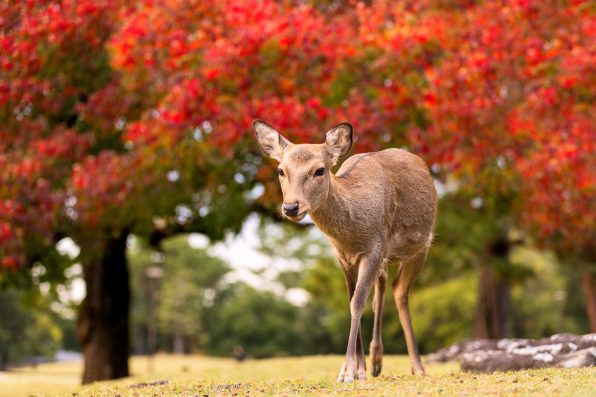Sika Deer Have Remained Protected Due To Their Spiritual Status For Almost 1,400 Years, And New Research Suggests This Species Has Unique Mitochondrial DNA That Can Only Be Passed From Mother To Offspring

For nearly 1,400 years, the sika deer in Japan have remained protected due to their spiritual status in Shintoism, which is Japan’s national religion.
As a result of this long-standing protection, researchers have found that the deer are genetically unique.
A total of 1,200 sika deer live around the Kasuga Taisha Shrine in Nara Park in the city of Nara, the ancient capital of Japan.
Hunting the deer within the grounds of the religious sanctuary was banned, allowing their populations to grow.
Over the last 50 years, the species has spread out from the shrine, taking up space throughout the city and on farms. Today, the deer are known to cause problems, such as destroying crops.
However, their special status has deterred many people from culling them, which is a common solution to overpopulation.
A team of researchers from Fukushima University has discovered that deer living near the shrine have unique mitochondrial DNA that can only be passed from mother to offspring.
The findings underscore the pivotal role that religious and cultural traditions played in preserving the deer’s lineage and how it shapes modern society. The study was published in the Society for Conservation Biology.
According to local legend, one of the four gods of the Kasuga Grand Shrine, Takemikazuchi, arrived on the back of a white deer one day in the year 768. Since then, the sika deer have been regarded as sacred messengers that guard the city of Nara.

elnariz – stock.adobe.com – illustrative purposes only, not the actual deer
Killing a sika deer was punishable by death until 1637, and after World War Two, the deer around the shrine were declared as natural monuments. The deer were hunted outside of the religious sanctuary, which isolated the population at Nara.
The team collected 294 blood and muscle samples from sika deer across 30 different sites. They determined that the deer within the Kasuga Taisha Shrine had a more restricted flow of genes, indicating a “pure lineage spanning more than a thousand years.”
The deer beyond the shrine had mixed genetic heritage. These deer could threaten the unique lineage of the population within the shrine as they continue to inhabit areas surrounding Nara Park.
The latest genetic research has the potential to change management policies for deer as the people of Nara are now faced with a crucial decision—to continue conserving sacred genetics or end the isolation that has endured for over a thousand years.
Sign up for Chip Chick’s newsletter and get stories like this delivered to your inbox.
More About:Animals





